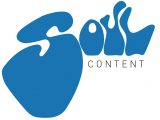Among the many fantastic thoughts and theories aired at the recent International Content Summit was the concept of ‘therapeutic slowness’. In case you weren’t there, Richard Cope, Mintel’s Global Head of Insight, argued that rather than quickly being taken over by digital, print is maintaining its status as the consumer’s number one choice for magazine-reading, chiefly because it provides a way for the consumer to relax and slow down.
Fuelled by such invigorating stats as 71% of people prefer reading print over digital, Richard went on to suggest that reading print now takes on a form of therapy, a ‘new slowness’ that provides respite from the always-on professional and social lives most people now lead. By sitting back with a good magazine, people can effectively put a barrier up against the constant needs of others and rack up some much-needed ‘me time’ (as long as they remember to switch off the smartphone and tablet first).
According to Richard, 42% of people currently buy magazines for long journeys. Many of these people could probably open their laptops, watch a video or do some shopping, but they choose to open their favourite magazine instead. Exactly why people do this, the neurological impulses that compels them to make this choice, isn’t clear. But there’s a definite need for people to drift off into their own worlds – if only for an hour – before they’re wrenched back into the real one.
Of course, sitting back with a magazine isn’t the only way to take time out from your digital-heavy world. There’s an entire industry of health clubs and spas, plus the good old pub, that will do a great job of winding you down. But the print magazine remains one of the cheapest and most accessible of quick-fix entertainments, one that not only gives you something to occupy your mind but puts out a strong ‘Do Not Disturb’ signal to your fellow passengers (or family members.)
My theory is that this ‘new slowness’ is born out of a desire to take in finite amounts of information; that the digital sphere is simply too vast for anyone to feel truly comfortable accessing a tiny part of it, without any hope of getting to the end. With a print product, you know where you are and when you’ll finish, safe in the knowledge that once you’ve taken in all the information, you’re done for the month. And if you pick up a few recipes along the way, then all the better.
Sam Upton
